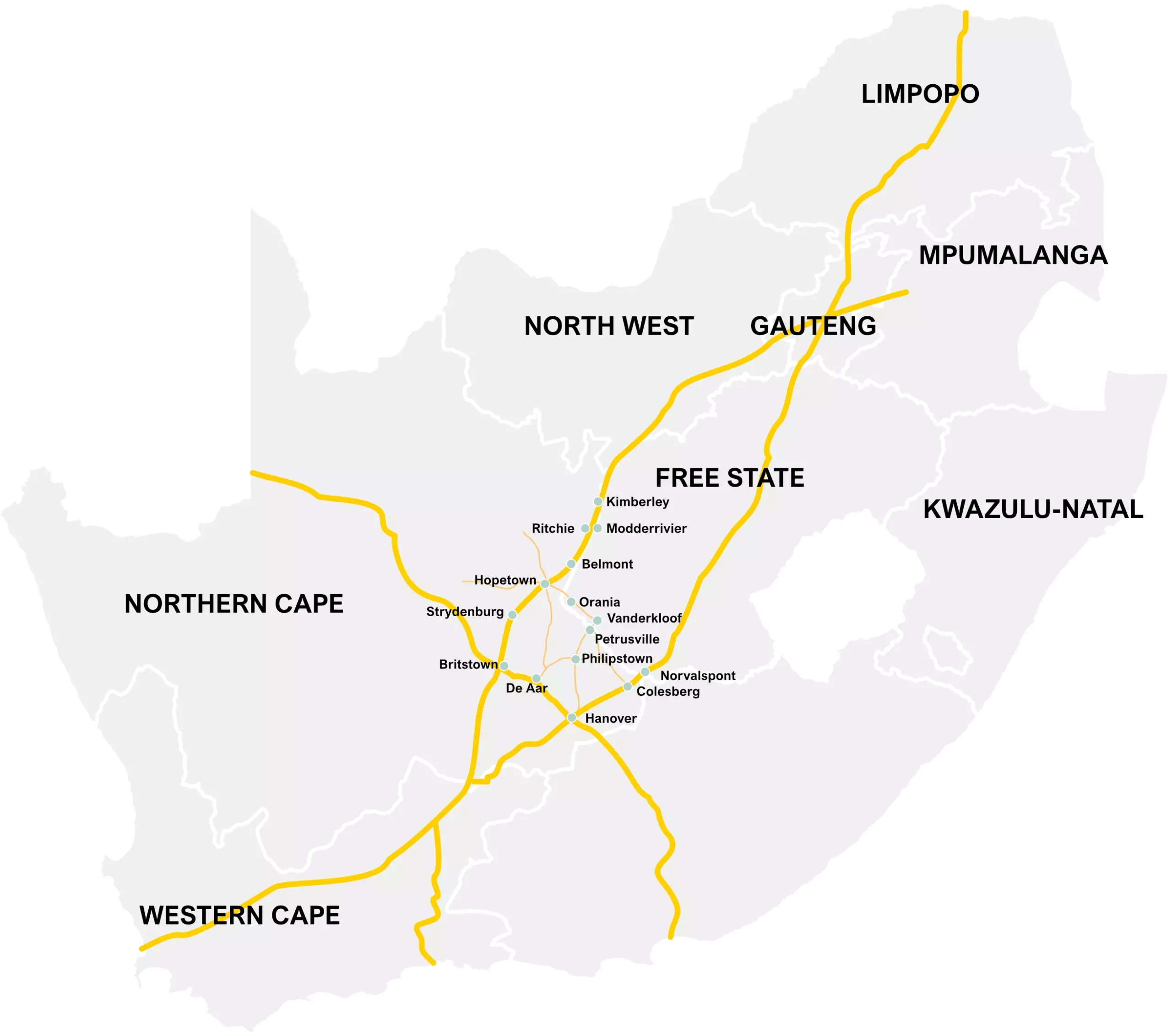Small, and isolated, but ever-welcoming. The various towns and villages of the Karoo Oasis Route have fascinating and differing histories. Each town, with its distinct Karoo architecture, rests in valleys between seemingly desolate plains with flat-topped “koppies” (rocky ridges). But don’t be fooled. The plains of the Karoo are filled with amazing wildlife and people.

From | To Phillipstown | To Kimberly |
|---|---|---|
Kimberley | 198km | 0 |
Ritchie | 169km | 47km |
Modderriver | 160km | 39km |
Belmont | 112km | 91km |
Witput | 96km | 129km |
Hopetown | 71km | 127km |
Orania | 63km | 165km |
Vanderkloof | 63km | 187km |
Petrusville | 52km | 212km |
Colesberg | 120km | 278km |
Norvalspont | 121km | 347km |
Hanover | 123km | 369km |
De Aar | 87km | 305km |
Britstown | 135km | 256km |
Strydenburg | 77km | 181km |
Philipstown | 0km | 253km |
The Karoo’s history stretches deep into the past — shaped by ancient geology, indigenous heritage, and colonial frontiers. Once part of a vast inland sea, its dramatic landscapes bear the fossils of prehistoric creatures, making it one of the world’s richest paleontological regions.
Long before European settlers arrived, the San people called this arid expanse home, leaving behind a legacy of rock art that whispers of spiritual traditions and a deep connection to the land. With the arrival of Dutch and British colonists, the Karoo became a frontier for livestock farming, mission stations, and strategic battles — especially during the Anglo-Boer War.
Today, the Karoo is a region where time slows, stories endure, and every small town has its own unique place in South Africa’s layered past.
Sustainability in the Karoo is rooted in respect — for the land, its people, and its future. This semi-arid region relies on careful stewardship of scarce resources like water and soil, making sustainable farming and tourism practices essential.
Local communities are embracing eco-conscious living, from regenerative sheep farming to solar-powered homesteads and low-impact tourism. Protecting biodiversity, conserving fossil heritage, and preserving cultural landmarks all play a role in ensuring the Karoo’s unique beauty endures for generations to come.
Visitors are encouraged to travel mindfully — support local businesses, conserve water, tread lightly, and take only memories.